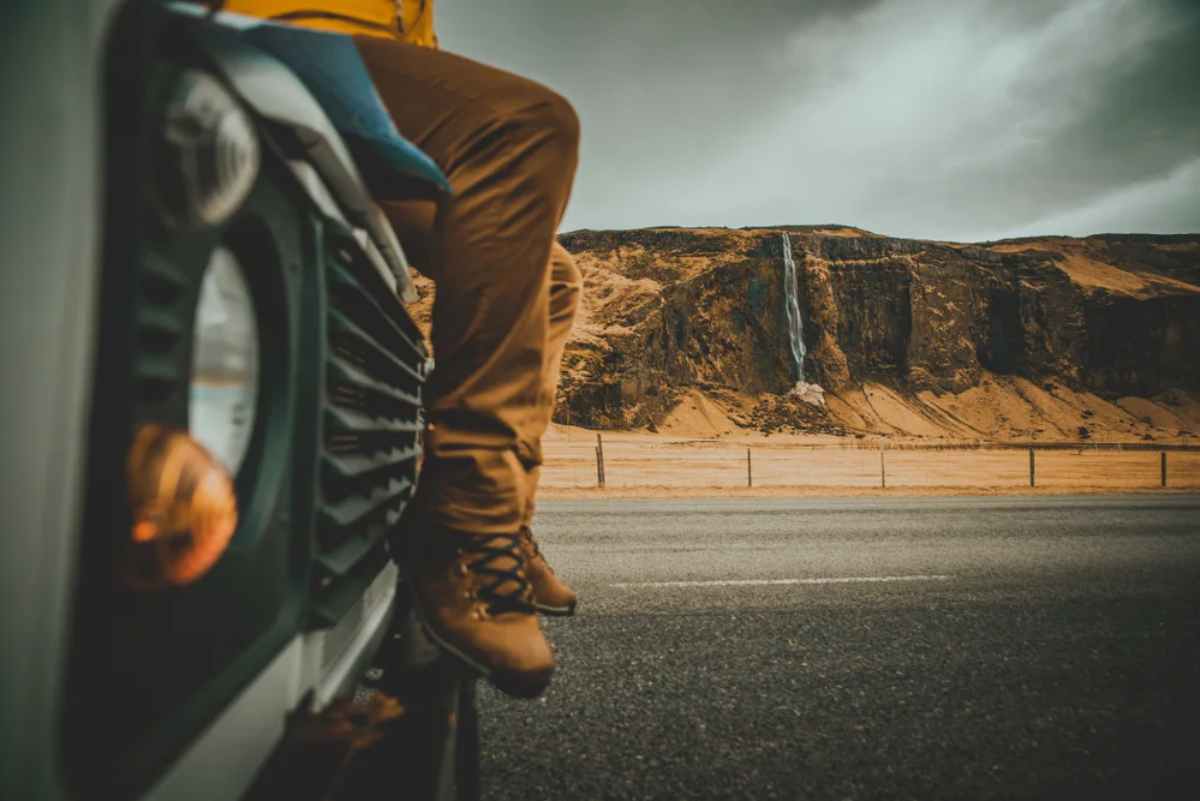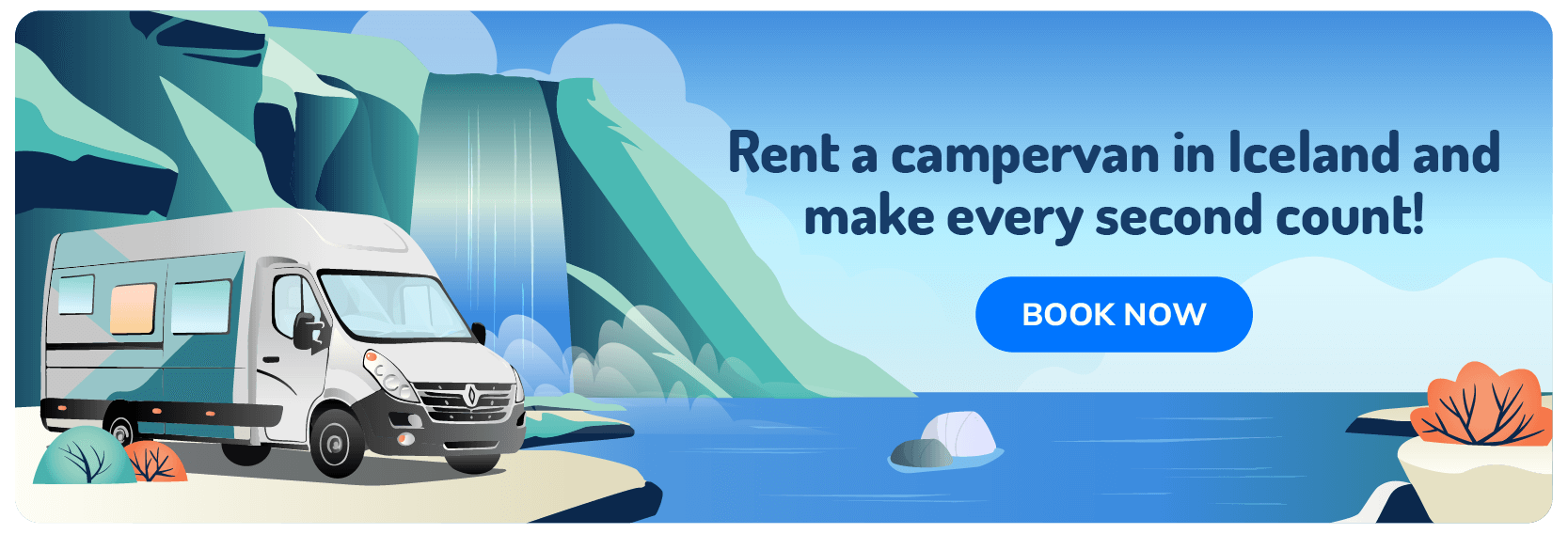Iceland, with its dramatic and contrasting terrain, is the ultimate adventure destination. But some of our most breathtaking landscapes can be taxing on vehicles. While over 60% of Iceland’s roads are paved and well-maintained, others may require special vehicles, and even seasonal changes can impact your choice of vehicle rental. So, do you need a 4x4 in Iceland, then?
The answer is not always, and that’s why we created this article. We aim to give you all the information you need to make an informed decision and choose the right ride for your road trip adventure around the island.
Do You Really Need a 4-Wheel Drive in Iceland? The Deciding Factors
If you’re asking yourself, “Do I need a 4x4 in Iceland?” consider the following factors when making a decision:
Our Seasons
Our seasons will definitely dictate when you’ll need a 4x4 camper in Iceland. During our summer months (June to August), most will be able to drive comfortably in a 2WD, as long as you stick to paved or generally well-maintained gravel roads. Even the shoulder months till October should be relatively safe as long as you keep an eye on the weather and the road conditions and don’t plan on exploring too far north (where it gets colder quicker).
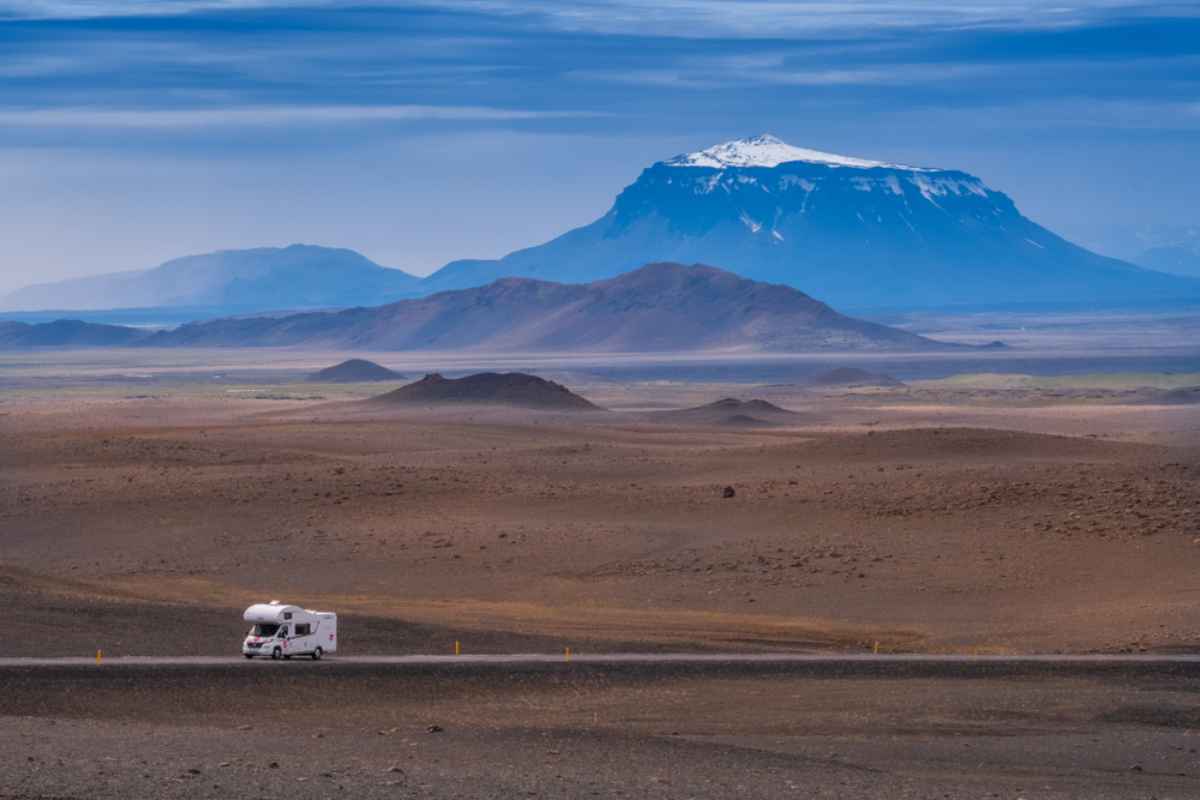
From late October, we’d recommend you drive a 4x4 vehicle. You may not always need it, but at least you’ll have the peace of mind that you’re ready and prepared for any weather and road conditions you may encounter leading up to winter. By November, you should not be driving a 2WD in Iceland anymore unless it’s just quick trips around the towns and cities and you have all the required winter gear and accessories on.
Your go-to should be a 4x4 till at least February. From March till May, you’ll have a similar opportunity of choosing between a fully-kitted 2WD vehicle or a 4WD. This is because it can take quite a while for the winter snow and ice to melt.
Your Itinerary
Where you plan on traveling will play a big role in choosing whether to drive a 4x4 in Iceland. If you know you’ll be driving on unpaved roads you’re unsure of the condition of, or you’re planning on exploring our more remote regions, such as the Westfjords and the Highlands, it’s much better to rent a 4x4 from the start.
Not only is this to tackle those rougher “roads less traveled,” but you’ll also need clearance for any potential water crossings (especially prevalent during spring in Iceland when the water levels of rivers and streams increase significantly due to meltwater).
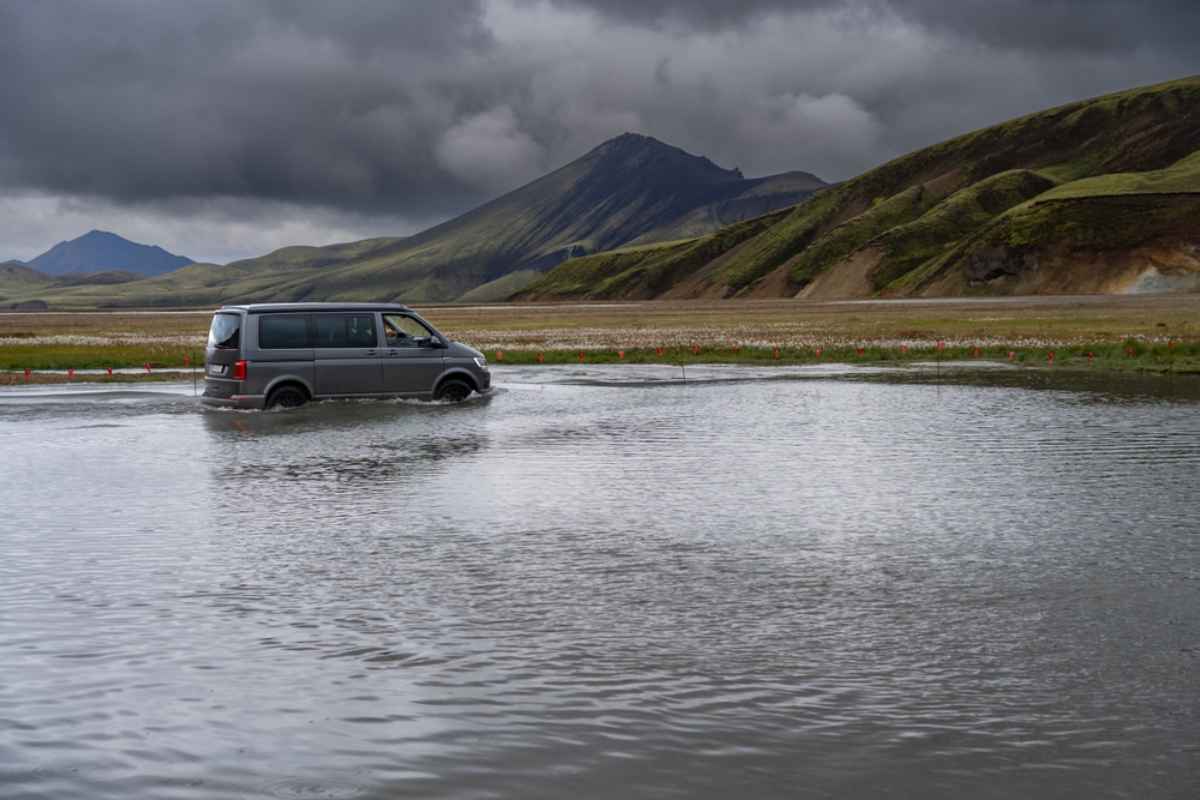
Legal Requirements
Just like you will be legally required to have winter tires on between the months of November and April, there are certain mandatory requirements when it comes to 4x4 vehicles in Iceland. If you look at a road map of Iceland, you’ll see that we have quite a few roads characterized by the letter F before its unique numbers, such as F208. These roads are aptly referred to as F-roads in Iceland and are known for being, well, let’s just say, on the adventurous side of unpaved roads here on the island.
Due to their rougher and challenging terrain, these roads are kept closed throughout the colder months of the year. But even when they are open during our summer season, you are only allowed to take these on in a 4WD. If you try driving these roads in a standard 2WD, you’ll need to be ready for one heck of an insurance claim or a pretty hefty fine if caught out by local authorities.
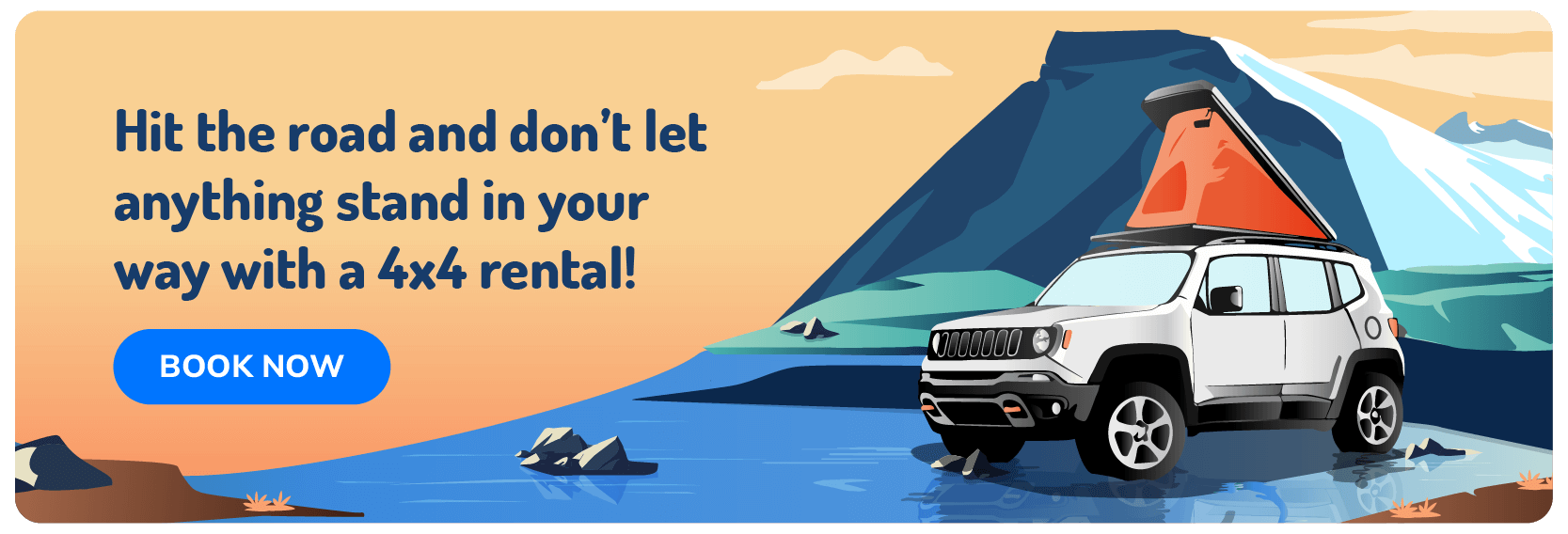
Personal Preference & Experience
A lot will also depend on the individual driver. Perhaps you enjoy or are used to driving a 4x4, irrespective of weather or road conditions. Or you’re not used to our type of weather and would just feel safer driving a 4x4 in general. Whatever your personal preference or experience, it can play a role in ultimately choosing which car to rent in Iceland.
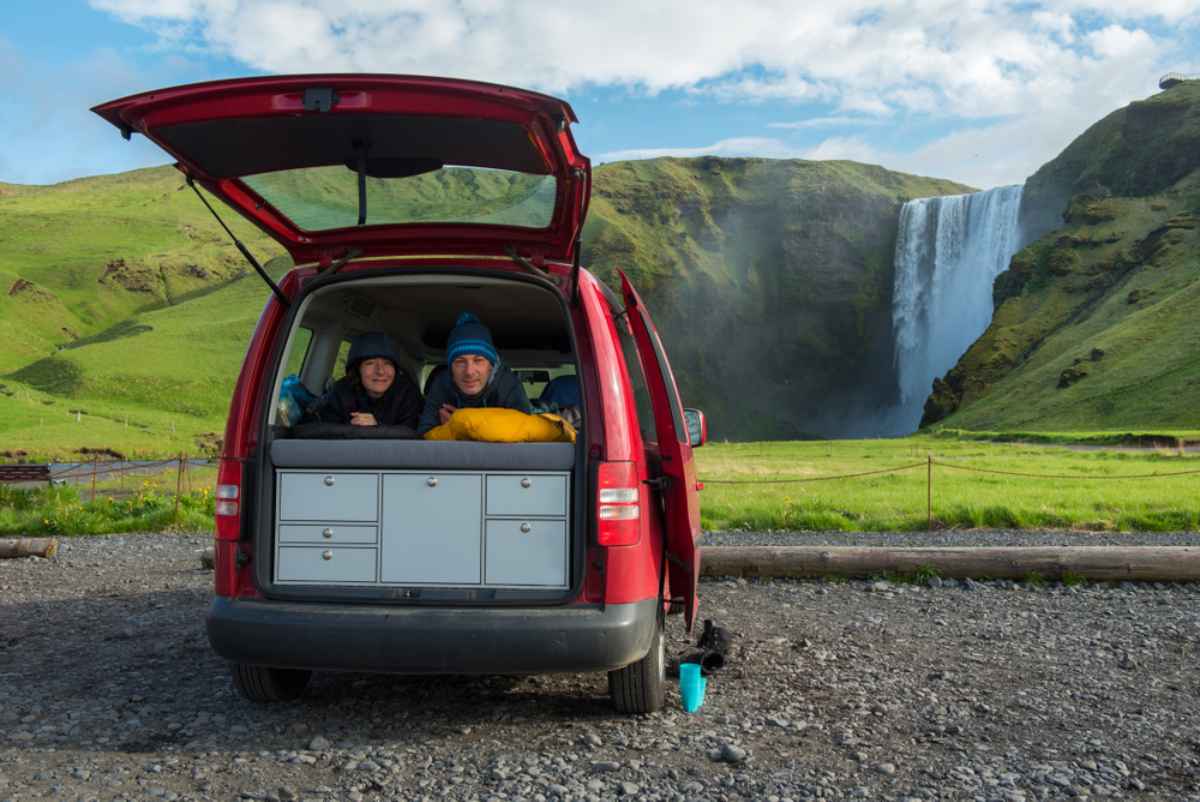
Spacial Needs
If you’re planning a longer trip or you’re just someone who usually packs everything and the kitchen sink whenever you leave the house – you’ll need space. Space is not something you’ll find in most 2 wheel drives here in Iceland, so if it’s space you need, you’re also more than likely going to end up in one of our bigger 4x4 vehicles.
When is a 2WD Campervan Enough?
We suggest you consider a 2WD campervan only in the following instances:
- When you’re planning a summer trip and know the weather will be on its best behavior and the road conditions are pretty pristine.
- When you’re planning on staying close to the cities and towns, and know that you’ll only be doing short trips on paved and well-maintained roads, such as the Golden Circle, the Ring Road, or the South Coast Way. Just keep in mind that the Ring Road’s conditions can also become challenging in certain parts, such as the Eastfjords and the northern regions, during the colder months of the year.
- If you’re really strapped for cash. Generally, you’ll pay roughly 30 to 50% more for a 4x4 vehicle if you take rental costs and gas consumption into account. Just remember, this will also limit you in terms of longer trips and the types of roads you’ll be able to access.

Comparing 2WD vs. 4WD Campervan Rentals
If you’re still on the fence and would like to compare our 2WD and 4WD campervans, the below cost comparison and pros and cons should help you make up your mind:
Cost Differences Between 2WD and 4WD Campervans
|
Feature |
2WD Campervan |
4x4Campervan |
|
Daily Rate |
Between $80 and $150, depending on make and model. |
Between $150 and $350, depending on make and model. |
|
Fuel-efficiency |
10 to 18 km/l, depending on make and model and conditions. |
2.5 to 8 km/l, depending on make and model and conditions. |
|
Insurance |
Between $19 and $40, depending on the package. |
Between $21 and $45, depending on the package. |
|
Additional Risk |
Insurance tends to exclude certain things, such as river crossings, from coverage. Please inquire about additional insurance coverage from your rental agent. |
Some insurances still exclude certain things, such as river crossings, despite it being a 4x4 with high clearance. Please inquire about additional insurance coverage from your rental agent. |
The Pros and Cons of Renting a 4WD Camper in Iceland
Decide for yourself whether the pros outweigh the cons:
Pros
- With a 4x4, you’ll be able to explore most of the island. Very little will hold you back, except for the most extreme weather and road conditions.
- These vehicles are much safer when caught in storms due to their durability, stability (very important with our legendary winds), and traction.
- They have higher ground clearance, which not only makes it easier to cross water and drive over obstacles but also drastically lowers your risk for any undercarriage damage throughout your trip.
- In general, you tend to have more peace of mind just knowing you’re in a bigger and stronger vehicle. This can often make an especially big difference since the 4x4, in this case, will also be your temporary home.
Cons
- A 4WD will cost you more than a 2WD – in rental costs, fuel consumption, and insurance coverage.
- While a larger campervan is extremely convenient and adds additional comfort to a trip, it can be challenging maneuvering them around on our narrow mountain roads or our tight parking spaces.
- There may be some days that you feel you really didn’t need it, yet you paid for it. For example, while exploring the capital city of Reykjavik after you already picked up your rental at Keflavik Airport.
Choosing the Campervan That’ll Suit Your Trip Itinerary
Below, you will find a quick-referencing guide on what type of vehicle you will need for some of our famous roads, routes, and attractions:
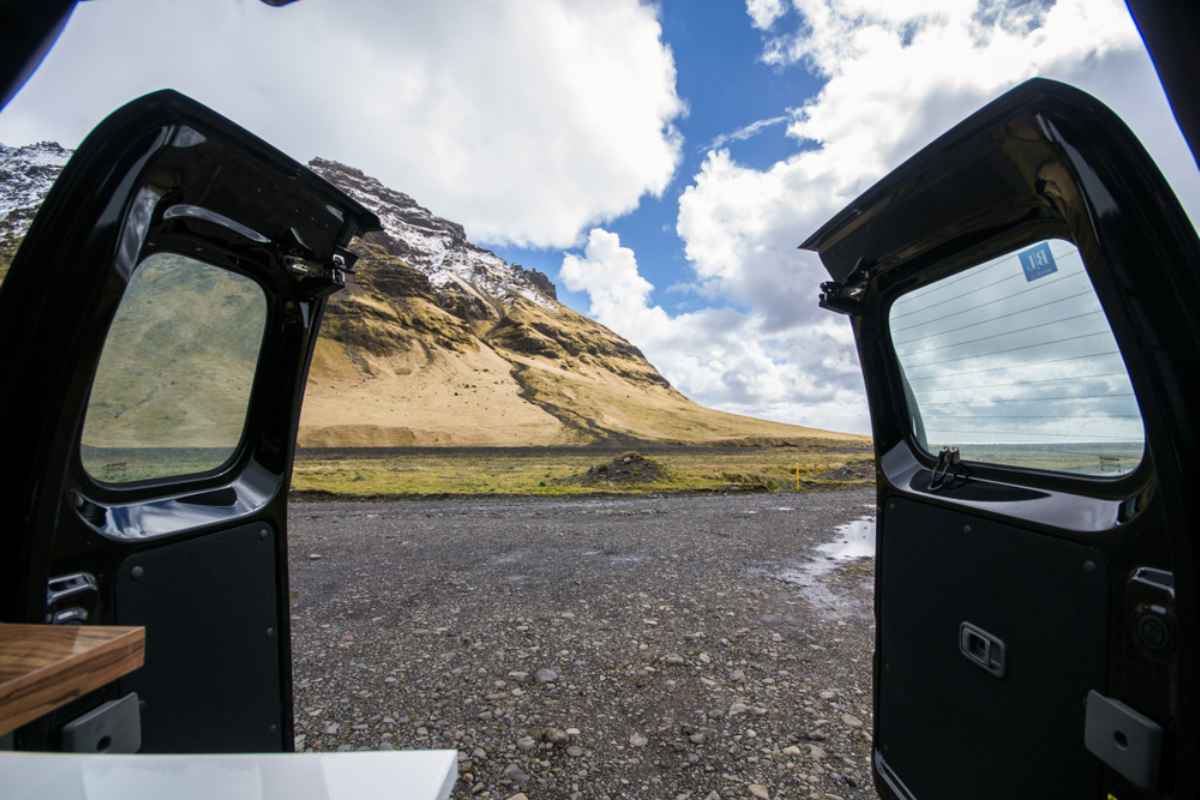
You Definitely Need a 4x4
The following must be driven and visited with a 4x4 in Iceland:
- The F-roads (most often found in the Westfjords and the Highlands)
- The Kaldidalur Valley Road (Road 550)
- The Kjalvegur Road (Road 35)
- The Jökulhalsleid Road (Road 570)
- Landmannalaugar (an attraction in the Highlands)
- Kerlingarfjöll (an attraction in the Highlands)
- Askja Caldera (an attraction in the Highlands)
You Can Get Away With Driving a 2WD
The following can be driven and visited with a 2WD in Iceland:
- The Ring Road (aka Route 1)
- The Golden Circle
- The South Coast Way
- Most of the Snæfellsnes Peninsula
*** Just keep in mind that this list does not take any unforeseen circumstances and severe weather conditions into account. Always double-check before heading out.
Driving in Iceland with a 4WD Campervan: A Few Additional Safety Considerations
If this will be your first time driving in Iceland, the following should help you have a safe and memorable trip:
Adhering to Iceland’s Road Signs and Laws
Iceland takes our road laws and safety very seriously, so don’t take any chances. Keep an eye out for and adhere to any road signs, stick to Iceland’s speed limits (which may differ from what you’re used to back home), and never stop or park along the road or go for a little DIY off-roading adventure.
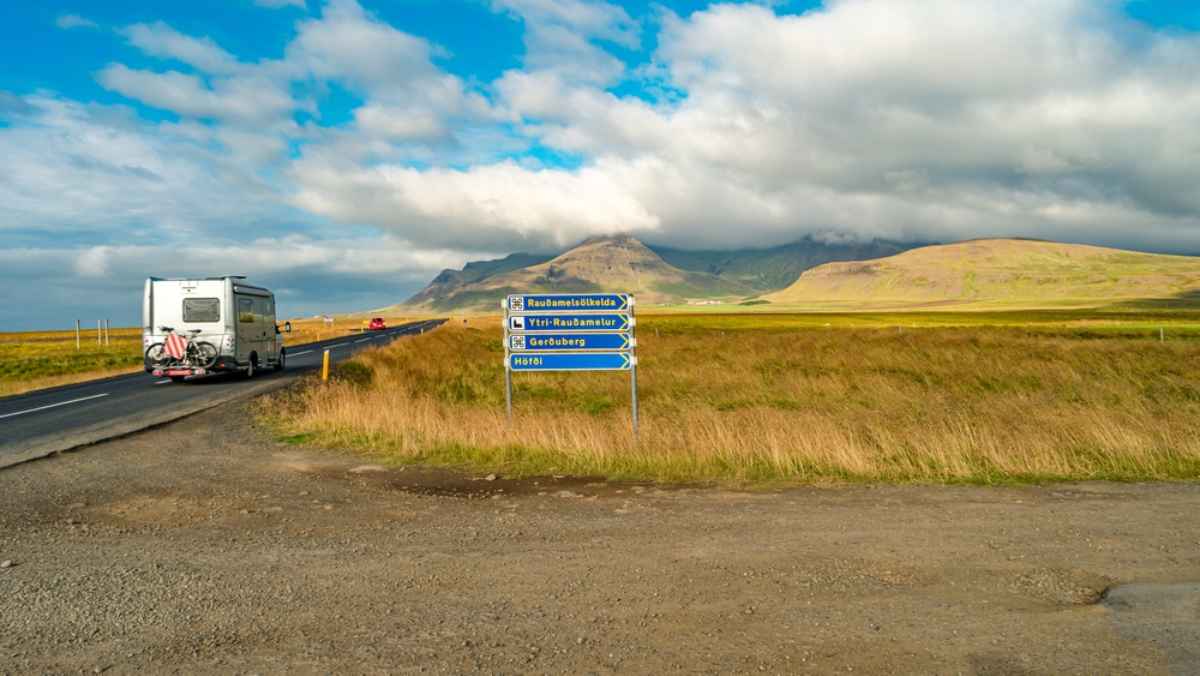
Also, remember that winter tires are mandatory between November and April every year, although this period can be slightly earlier or extended based on the particular weather conditions that year. Most rental agencies will automatically have that sorted for you. But it’s always worth checking and asking whether their winter tires are studded tires (what we recommend for those icy times).
Ensure you diligently keep to all the road rules and regulations because if not, you will be met with pretty severe penalties if caught, and this is the last thing you want, marring what could’ve been the adventure of a lifetime here in Iceland.
Car Rental Insurance & What Is Covered on 4WD Vehicles
General car rental insurance usually includes two types of coverage:
- Collision Damage Waiver (CDW) – This coverage will pay for most of the damage caused to the vehicle, with you only being responsible for the excess amount.
- Third Party Liability (TPL) – This coverage will pay for any damage or injury you’ve caused while driving your rental car. Once again, you’ll only be responsible for paying the excess.
When traveling with a 4WD campervan, we highly recommend looking into the following additional insurance coverages:
- Super Collision Damage Waiver (SCDW) – Since the cover actually works in conjunction with the CDW cover. This coverage lowers the excess amount you’ll be responsible for in the event of anything happening.
- Gravel Protection (GP) – This cover will protect against any damage caused by rocks or pebbles, such as a cracked windscreen. This is essential for those taking on any unpaved roads.
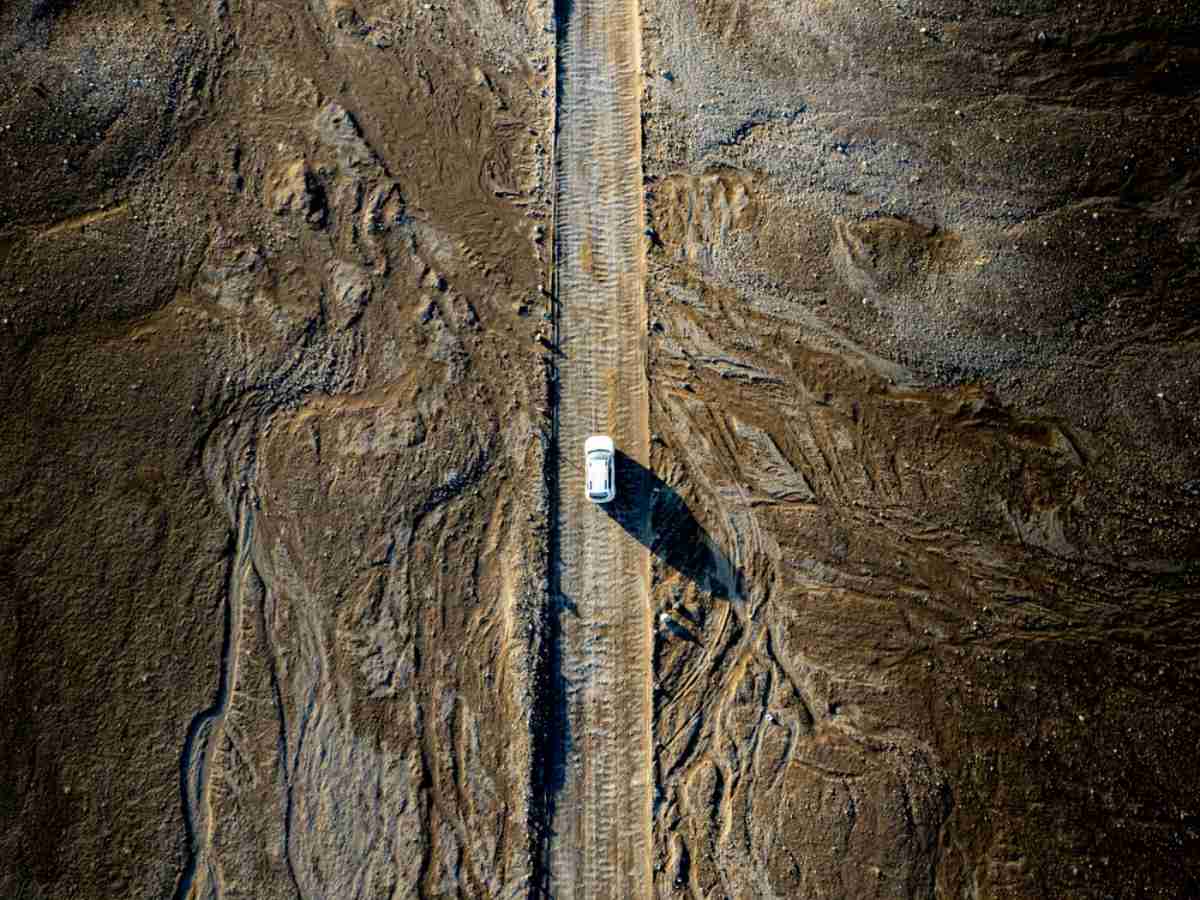
- Sand and Ash Protection (SAAP) – This cover protects against any damage caused by sand or volcanic ash and is an absolute must if you’re planning on cruising along our coast, where the winds are known to batter cars with beach sand.
With Motorhome Iceland, you can have a comprehensive insurance option by selecting either our Premium Insurance bundle or our Platinum insurance package, with zero liability! Check our extras page and select your preferred option today!
It’s always worth having a chat with your rental agent about insurance since most policies exclude damage to the undercarriage, F-road damage, or damage caused by water crossings. It’s important to check this before leaving the lot to ensure you don’t end up with a nasty surprise.
Keeping Up to Date with Weather and Road Conditions
While you can get the general gist of the weather you can experience during your trip by taking seasons into consideration, Iceland’s weather is notoriously fickle (there’s a good reason why our local saying goes, “You can experience all four seasons in a day here in Iceland”).
So keep a close eye on the weather on the Vedur website as well as the road conditions on the Umferdin website. Alternatively (or additionally), Safetravel.is will send notifications and alerts directly to your mobile.
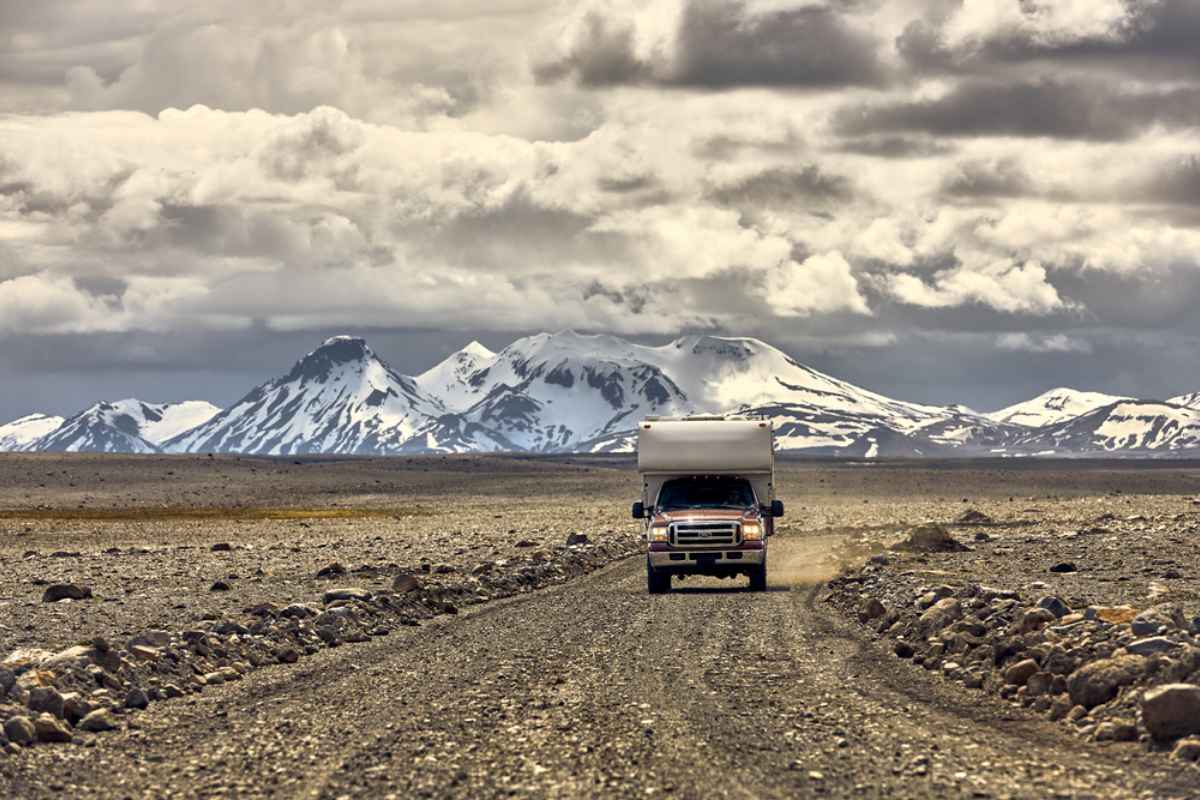
Our Final Verdict: Should You Rent a 4x4 for Your Iceland Road Trip?
Our recommendation will always be to splurge that little extra if you’re planning a proper exploration of the island, especially its more remote regions and hidden gems. Check out our variety of campervan rentals in Iceland and choose the one that’ll suit your trip itinerary and personal preferences best (probably a 4x4 – nudge, nudge, wink, wink).
